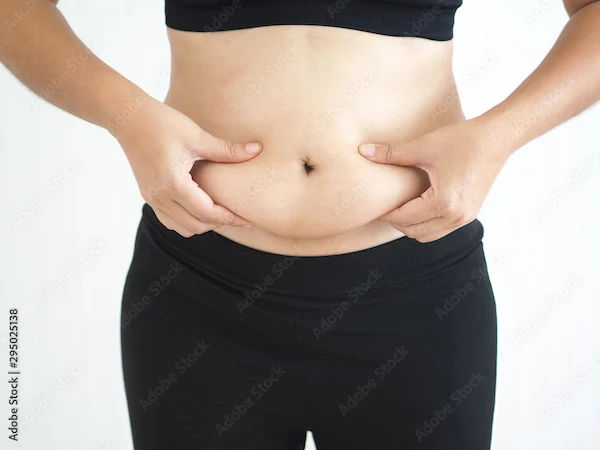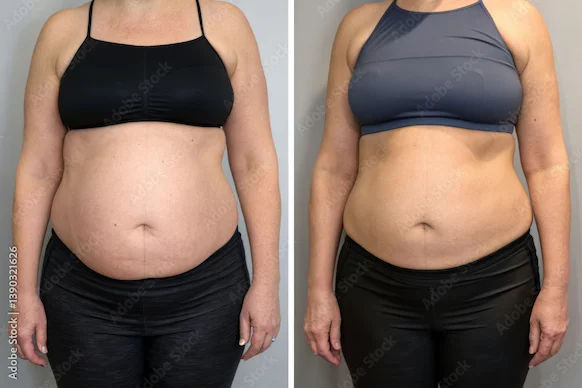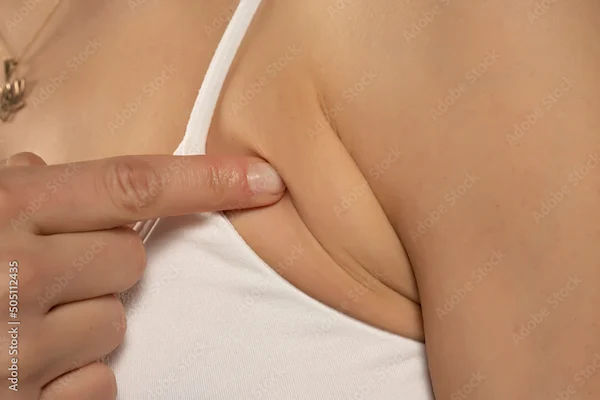How To Reduce Face Fat?
Understand face fat and the factors influencing it. Discover the effective ways to reduce face fat with diet, exercise, non-surgical treatments, and lifestyle modifications for a slimmer and more defined face.

Written by Dr. Sonia Bhatt
Last updated on 3rd Jul, 2025

Introduction
Facial fat is a build-up of excess fat in the face, usually seen on the cheeks, chin, and neck. With the trend of chiselled jawlines and high cheekbones, losing facial fat has become a common goal for many. Shedding facial fat may seem daunting, but it can be achievable with proper techniques and approaches.
Understanding Facial Fat
Facial fat accumulation varies from person to person and is influenced by several factors, including genetics, lifestyle, and overall body composition. While a few people may naturally have a fuller face, others may experience facial fat gain due to weight fluctuations. Facial fat is often stored in the cheeks, jawline and under the chin, contributing to a rounder appearance. Targeting fat loss in just one area may not be possible, but adopting holistic strategies can help achieve a leaner facial structure. Also, as people age, they lose muscle and collagen, which leads to sagging skin and can give the impression of facial fat. Lack of exercise, high body fat and poor diet can also contribute to a fuller face.
Factors Influencing Facial Fat
There are a few factors that can contribute to excess fat in the face, ranging from diet to lifestyle habits. The most common factors include:
Dehydration: Insufficient water intake can cause fluid retention, which can lead to facial bloating and puffiness.
Genetics: A few individuals are naturally predisposed to store more fat in their faces due to hereditary factors.
Weight Gain: This is a primary cause of fat accumulation on the face. Fat accumulates throughout the body, including the face, when a person gains weight.
Ageing: As people age, facial fat can redistribute, leading to a fuller appearance even if their overall weight remains the same.
Lack of Exercise: A sedentary lifestyle can slow metabolism, increasing fat storage in the body, including the face.
Sleep Deprivation: Poor sleep habits can disrupt hormones which regulate appetite and metabolism, contributing to weight gain and face fat.
Poor Diet: Excess consumption of refined carbohydrates, processed foods and sugar can lead to weight gain, including facial fat accumulation.
According to Harvard Health Publishing, fat in the face can shift with age. It can clump up and move downward, making formerly round features appear gaunt. Meanwhile, the lower half of the face can look plumper with bigger skin around the chin and neck area. The skin loses elasticity as collagen production declines. Weaker muscles, slower metabolism and hormonal changes can lead to sagging skin and more noticeable fat in certain areas.
Physical Activity and Exercise for Reducing Face Fat
There are several exercises that individuals can focus on to help reduce facial fat.
1. Cardiovascular Exercises
Targeted fat loss may not be possible. Hence, overall body fat reduction is key. Cardio workouts help in burning excess calories and promoting facial fat loss.
A few effective cardio exercises can include:
High-Intensity Interval Training (HIIT) for increased fat burning.
Cycling, brisk walking and running.
Swimming and skipping rope for full-body workouts.
2. Facial Exercises
Facial exercises help tone the muscles in the face, improving definition and reducing puffiness.
A few facial exercises include:
Jawline Exercises: This includes tilting the head back and pushing the lower jaw forward.
Cheek Lifts: Smiling widely while lifting the cheek muscles for 10 seconds.
Puffing Air: This involves filling the mouth with air and shifting it from cheek to cheek.
Additionally, strength training exercises can help build muscle and boost metabolism, allowing one to burn more calories even at rest. This can help with overall fat loss, including the face.
Lifestyle Modifications to Reduce Face Fat
Adopting a few lifestyle changes can give lasting results and help reduce face fat.
1. Hydration
The importance of drinking adequate water cannot be emphasised enough. Water is crucial for reducing bloating and flushing out toxins. Dehydration can cause water retention, which can lead to puffiness of the face.
Aiming to have at least eight glasses of water per day can help.
Incorporate hydrating foods like oranges, cucumbers, and watermelon can make a difference.
2. Quality Sleep
Poor sleep habits can affect a person’s metabolism and increase cortisol levels. This can lead to fat accumulation.
Aiming to have 7–9 hours of restful sleep per night is necessary.
Maintaining a consistent sleep schedule and avoiding screens or limiting screen time before going to bed can help.
Dietary Changes to Reduce Face Fat
A well-balanced diet plays a crucial role in reducing overall body fat, including facial fat. Consuming nutrient-rich foods ensures the body functions efficiently and promotes a leaner facial appearance.
Key dietary principles include the following:
High-Protein Diet: Protein-rich foods help in muscle retention and improve metabolism.
Fibre-Rich Foods: Fruits, whole grains and vegetables enhance digestion and keeps one full for longer.
Calorie Deficit: Consuming fewer calories than burned helps lose weight and reduce facial fat.
1. Foods to Include
Certain foods can help in promoting fat loss, which may include:
Hydrating fruits like watermelon and cucumber to reduce bloating.
Leafy greens, whole grains, nuts, and seeds and lean proteins like chicken, fish, tofu.
Herbal teas and green teas to boost metabolism.
2. Foods to Avoid
A few food options can be avoided as they can contribute to weight gain and bloating, which include:
Alcohol, as it leads to puffiness and dehydration.
Processed foods, fried foods, beverages, and excess salt intake.
Addressing Underlying Health Conditions
A few underlying health conditions can lead to weight gain, including in the face. Hormonal Imbalances due to conditions like hypothyroidism or PCOS can lead to weight gain and face fat. Hence, it is crucial to consult a doctor if experiencing unexplained weight gain or bloating. Managing hormones is necessary through medications, diet, and lifestyle changes. Consulting a healthcare professional is advisable if facial fat persists despite lifestyle changes. A doctor can help in assessing underlying medical issues contributing to face fat. Check-ups and blood tests can also help diagnose metabolic concerns.
Non-Surgical Treatments
Below are a few non-surgical treatments that can help contour the face:
Facial massages: These can help improve circulation, reduce bloating, and define facial contours. Tools like gua sha stones and jade rollers can help. Massaging with essential oils like argan or almond oil can add hydration.
Cosmetic Treatments: For those seeking noninvasive options, cosmetic treatments, such as Botox fillers and ultrasound-based treatments to contour the face, can also help. However, for professional advice, it is important to consult a dermatologist.
Is It Possible to Lose Fat Only From the Face?
While there is no evidence that supports spot reduction or targeted fat loss from just the face, overall fat loss occurs gradually and evenly throughout all parts of the body, including the face.
Individuals wanting to reduce facial fat must focus on overall body fat reduction, which can be achieved through a combination of:
Regular Exercise: Cardiovascular exercises like swimming, running, jogging, or cycling can help burn calories and reduce excess fat.
Healthy Diet: Eating a balanced diet with fewer calories can encourage overall weight loss.
Strength Training: Building muscle mass can help increase metabolism, contributing to maintaining a healthy weight over time.
As individuals lose overall excess body fat, their faces naturally slim down.
Conclusion
Reducing face fat can be achievable; however, embracing a holistic approach focusing on overall well-being is essential. A balanced lifestyle, diet, confidence and self-acceptance can ultimately lead to better health and happiness.
Consult Top General Physician
Consult Top General Physician

Dr. Rajib Ghose
General Practitioner
25 Years • MBBS
East Midnapore
VIVEKANANDA SEBA SADAN, East Midnapore

Dr. Rajib Ghose
General Physician/ Internal Medicine Specialist
26 Years • MBBS
Kolkata
B Ghose Foundation Doctor's Chamber, Kolkata
(25+ Patients)

Dr. Leeni Mehta
General Physician/ Internal Medicine Specialist
13 Years • MBBS, MD (Medicine), PGD (Clinical Endocrinology and Diabetes), RCP (UK,lONDON)
Bengaluru
Apollo Medical Center, Marathahalli, Bengaluru
(150+ Patients)

Dr. Swagato Podder
General Practitioner
5 Years • MBBS
Kolkata
GRD POLYCLINIC, Kolkata
Dr. Prithvi Raj
General Physician/ Internal Medicine Specialist
3 Years • MBBS, MD
Bengaluru
Apollo Medical Center, Marathahalli, Bengaluru




